Boost the reservations of your Hotel adapting it for more travelers
Adapting your Hotel is easier than you think
It is know that travelers with disabilities must fight to face the struggles that the surroundings impose them, especially when the Hotel facilities have accessibility limitations.
As a way of supporting the Accessible Tourism segment in Mexico, we want to share with the Hotels some easy suggestions to apply, which will help them increase the reservations from these travelers.
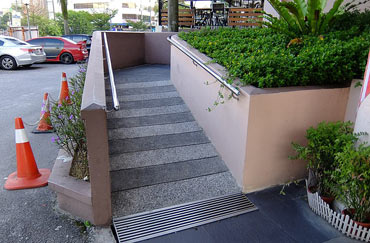
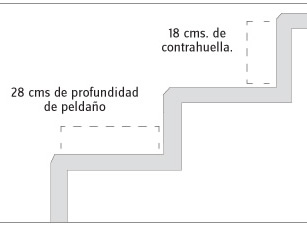
Staircase Measurescalera
In order to be safely used by children, seniors, visually impaired people or those who suffer any kind of mobility impairment, the stairs must have the following characteristics:
- Anti-slip materials for both wet and dry conditions.
- A minimum width of 1.20 meters.
- Properly proportioned steps: the treads must not measure less than 28 cm and the riser or height no more than 18 cm. The optimal relation is 2 risers + 1 tread = 60 to 65 cm.
- If it’s a public staircase, handrails are required on both sides.
- A strip of different texture and color at the newel posts.
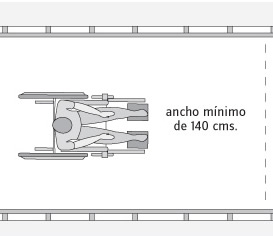
Elevators
The elevators must have the following characteristics:
- Minimum width of 85 cm and an interior measure of at least 140 cm x 110 cm.
- The numeration and required annotations to operate the movement of the elevator must be on relief.
- The elevator stopping time must be enough to allow the entrance of a disabled person, wheelchair user or visually impaired person.

Hallways Measures
If the hallways are public they must have a minimum width of 140 cm and remain obstacle free (without furniture, decorations, etc.)
Avoid placing carpets or mats that aren’t attached to the floor, since they’re the frequent cause of falls and accidents.
Doors
Legally, the access doors of a building that is used by more than 50 people cannot be revolving and must have a minimum width of 90 cm.
The interior doors cannot be less than 85 cm wide.
The doorknob must be anatomic (handle type) and must be located 95 cm above the floor.
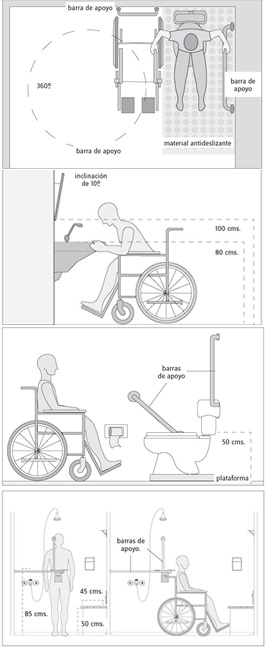
Bathrooms
Every public building must have at least 1 bathroom adapted for people with disabilities. It must be located in an accessible area, clearly signaled with the correspondent international symbol. In the case of public bathrooms for disabled people, it can be an only bathroom shared by men and women, as long as it has independent access from the rest of the bathrooms.
It is advised that the bathroom door is sliding or opens outwards to avoid that, in case the user suffers a fall inside, it stops the door from being opened.
The bathroom must have some anti-slip material and a free space of at least 150 cm diameter that allows a wheelchair to turn 360 degrees.
Along with the sanitary items there must be support bars. All of the bathroom accessories (soap holder, towel rack, etc.) must be installed at no more than 120 cm above the floor.
The sink must not have a pedestal nor interior furniture that avoids a wheelchair to come close to it. It must be 80 cm high. It is convenient that the water tap is a handle, pressure or any other type of system that doesn’t require to move the wrist to make it work. The mirror will be installed at a 100 cm height from the ground and with a 10º angle of inclination from the vertical.
The WC must be placed at a 50 cm height from the floor. If the standard artifact is less high, it can be solved placing it over a platform as close to the base of the WC as possible to ease reaching it. The existence of a grab bar is fundamental (must be resistant, anti-slip material) that allows the transfer of the wheelchair to the WC.
A shower is more practical and comfortable than a bathtub. The receptacle cannot have borders that avoid a wheelchair from reaching it; it’s enough with a 1.5 cm gradient and a pendant of 2% to the drain to avoid the water running around the bathroom. Grab rails must be installed at 85 cm in horizontal direction and up to 140 cm in vertical. The shower must include a seat, fixed and folding (ideally 45 x 45 cm and 50 cm above the floor) or mobile (any plastic or garden chair can be useful). The shower can be the telephone kind as it is more comfortable and easy to manipulate.
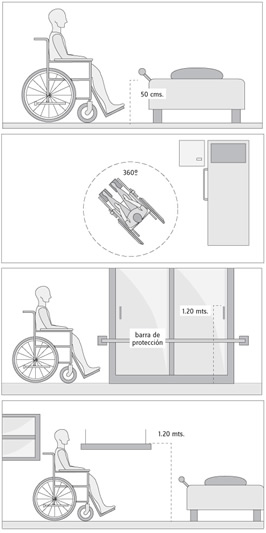
Rooms Measures
The rooms must have the following characteristics:
- The bed must be raised off the floor at least 20 cm. The ideal is that its height is as close as possible to the one of a wheelchair: 45 to 50 cm.
- The bedrooms must consider a circular area of rotation of 360º and have bed rails to ease moving from the wheelchair.
- If there are windows to the floor or windows lower than 1.20 meters they must be protected against possible wheelchair crashes.
- The knobs and window opening and closing mechanisms cannot be higher than 1.20 meters. Avoid putting objects that difficult reaching the window.
- The recommended high for shelves is up to 130 cm from the floor level.
- Safety deposit boxes must be located 130 cm high from the floor level.

